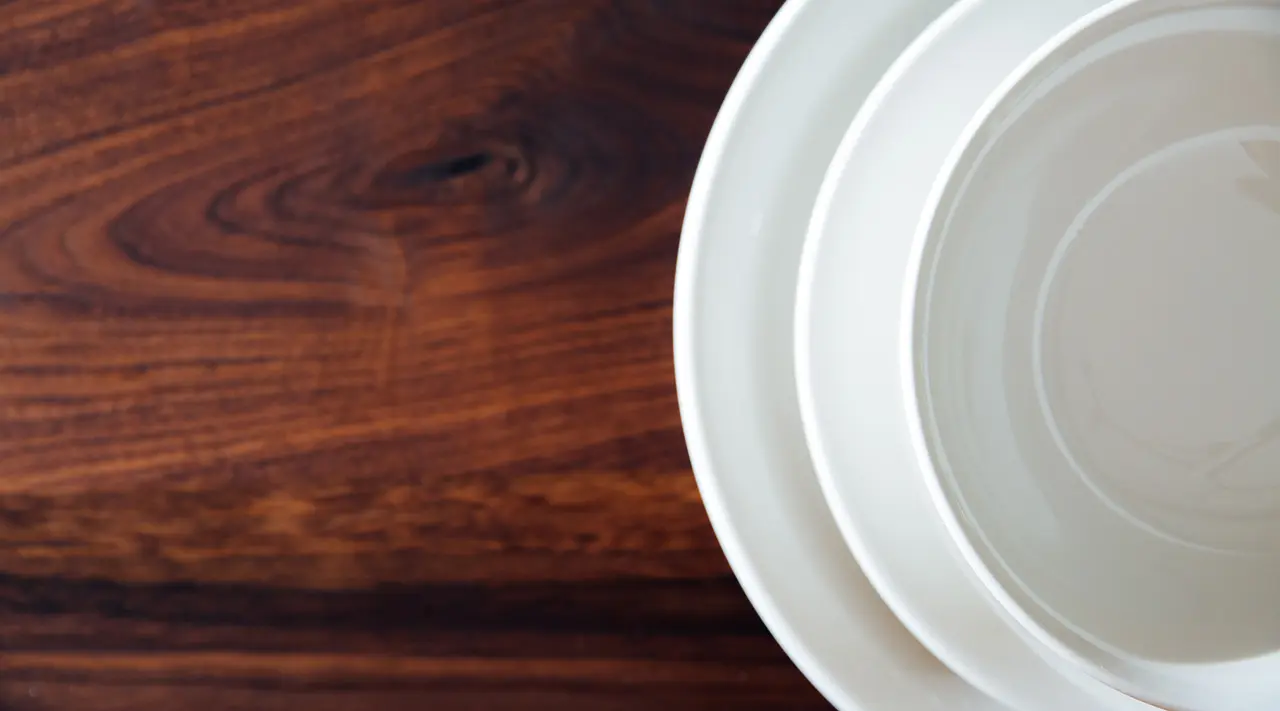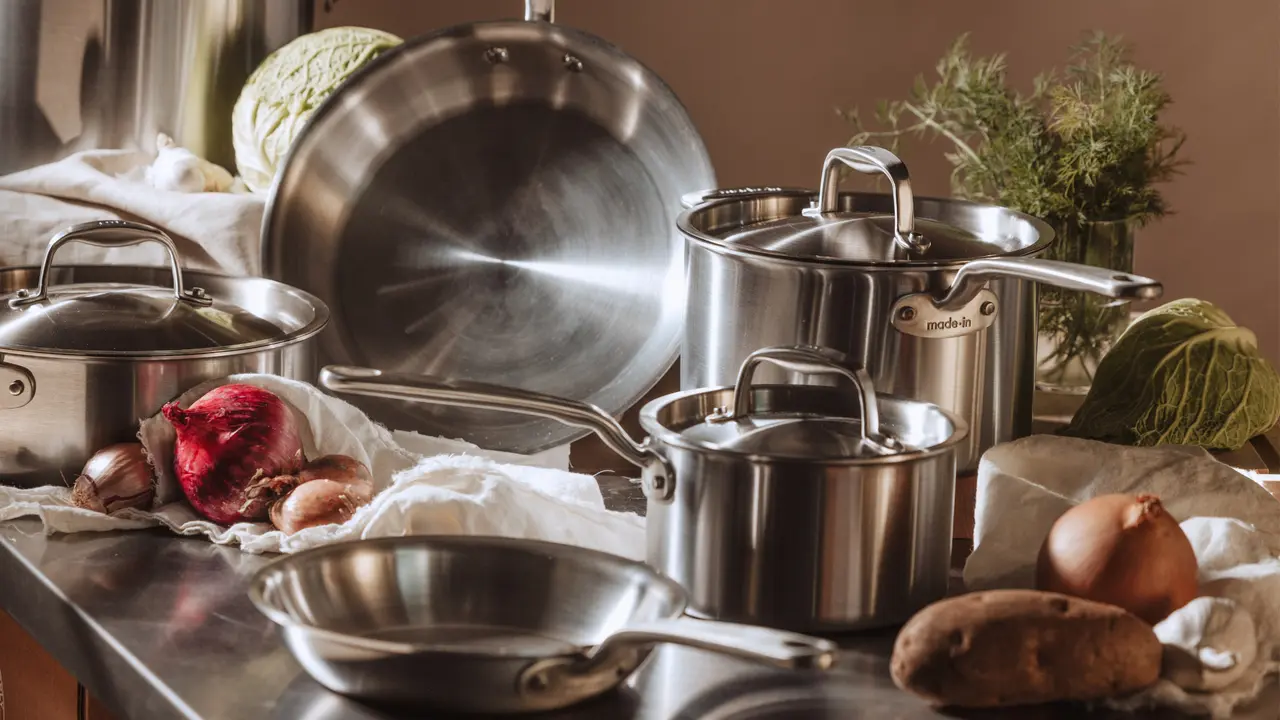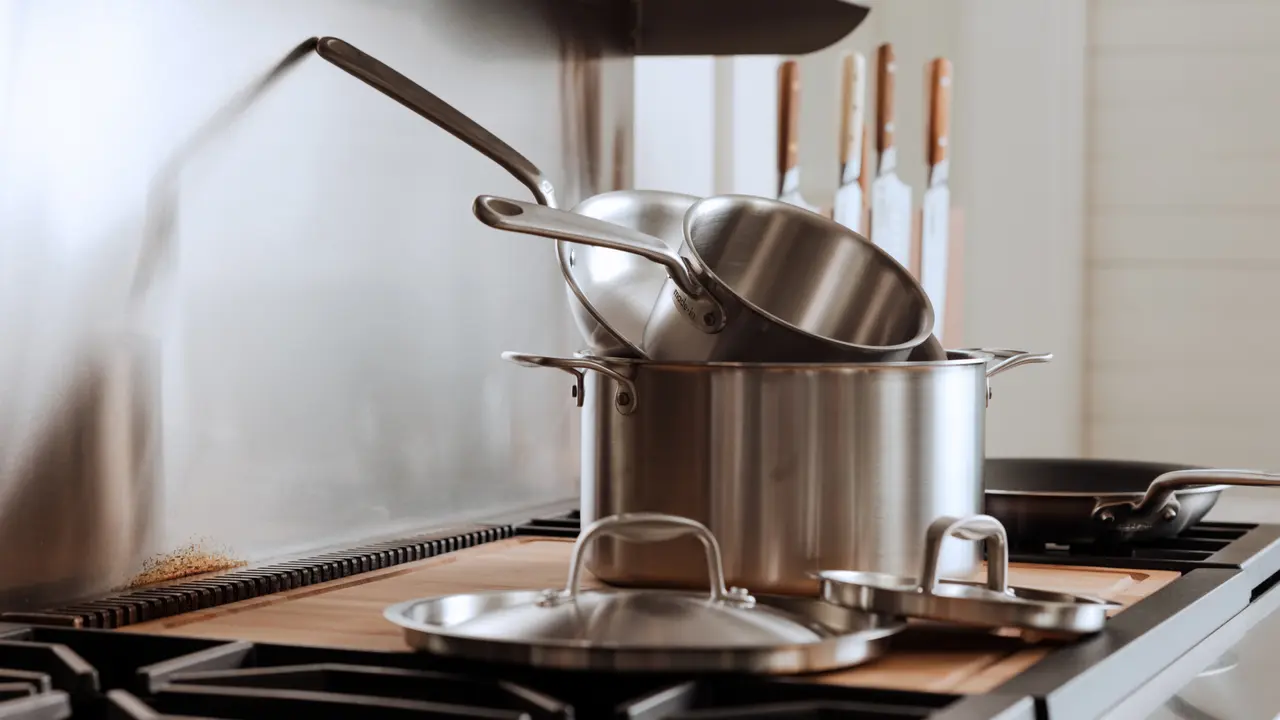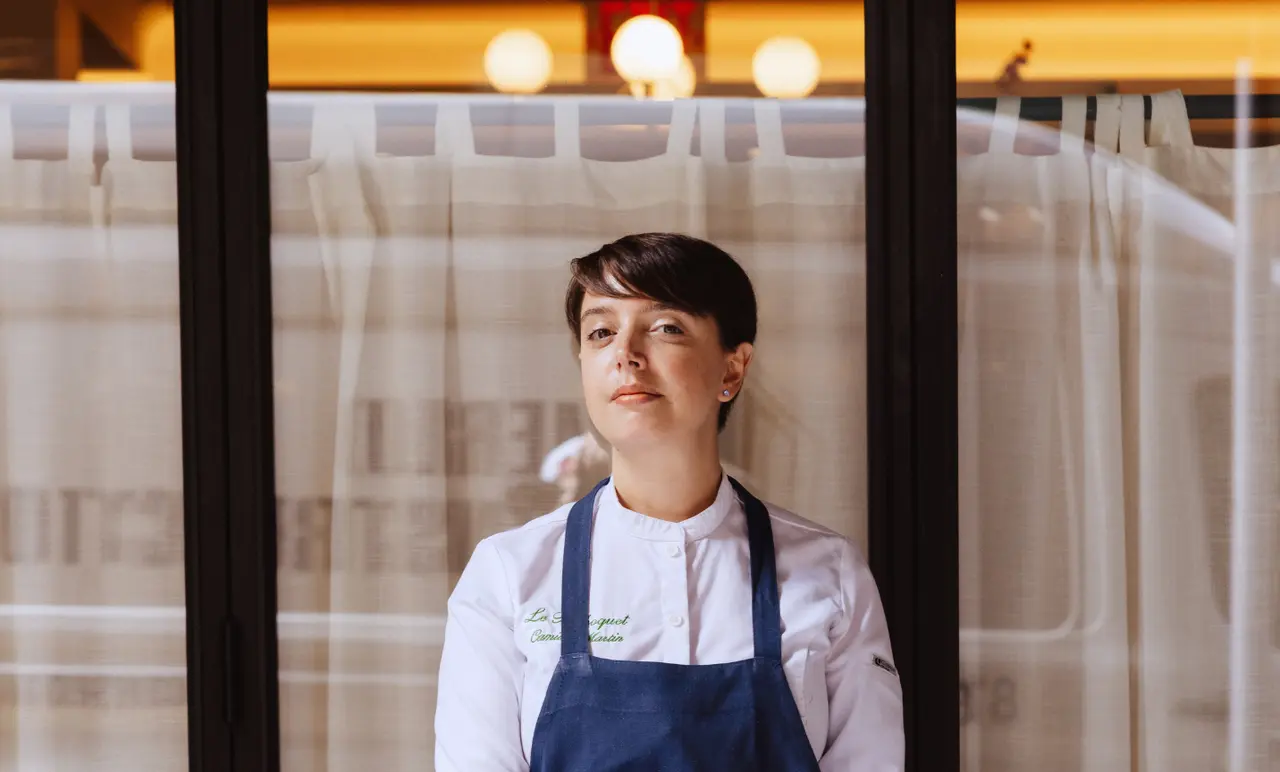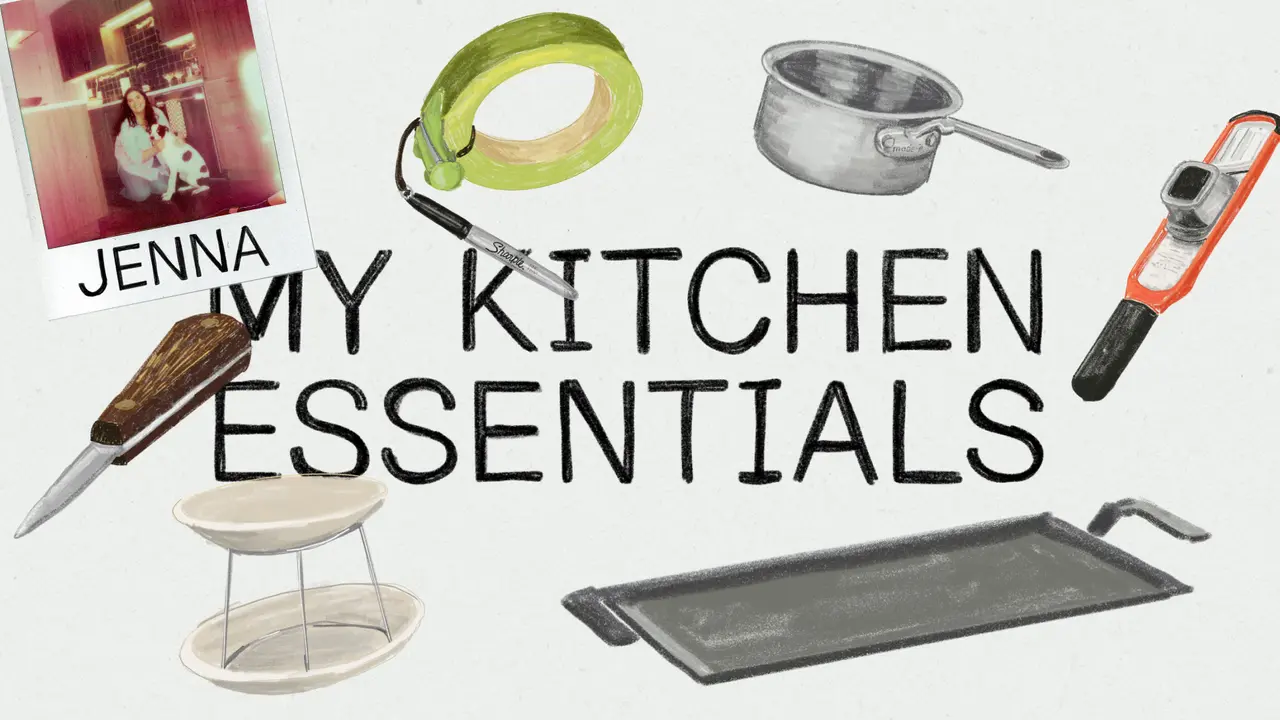There is a lot that goes into understanding how to set a table. There’s silverware etiquette, different types of drinking glasses, and the proper placement of various plates. Choosing dinnerware and the right plate materials for your home can also be a bit intimidating, but anything is better than relying on the disposable plates from last week’s pizza order. Whether you’re looking for an elegant look or something a bit more casual for your everyday needs, you will be faced with many options. You have porcelain, earthenware, ceramic, stoneware, and more. With various designs, price points, and uses, it is essential to understand the differences between types of plates. In this blog post, we’ll dive into the different plate materials, the most common types of plates and bowls you would find in a home, and what the best everyday choice is for dishes.
What Type of Plate Material is Best for Dinnerware?
CERAMIC
Ceramic plateware consists of clay fired at an extremely high temperature for an extended period. This process results in plates, bowls, and serving platters that are highly durable and resistant to breakage. High-quality ceramic plates will be fully glazed with a reactive coating, allowing you to stack your plates or bowls without any worry of scratching. Made In’s Tabletop Set is the perfect addition to your kitchen if you’re looking for reliably strong dinnerware for everyday use.
STONEWARE
Stoneware falls in between ceramic and earthenware. It is both more durable and resistant to scratches than earthenware. Also made out of clay, it's fired at a high temperature, hotter than earthenware but not ceramic.
EARTHENWARE
Earthenware plateware is also made from clay yet isn’t fired at as high a temperature as ceramic plateware. Earthenware is more porous than stoneware and ceramic, making it less durable and strong. Earthenware plates and bowls are recognized for their thickness, as well.
Of these base material choices, ceramic plateware is the most durable, especially if it is high-alumina vitrified ceramic. Vitrification is the process of heating plates, bowls, or serving platters to their boiling point and then firing them in the kiln to give the clay a smooth glasslike surface. The results of this mean that your plateware will be extremely strong and more resistant to bacteria. This process is the gold standard for the hospitality industry.
What is the Most Common Type of Plate you’d Find at Home?
Now that we’ve covered the different plate material options, it is crucial to understand the different shapes and designs of plates. The two most common plates sizes are a dinner plate and an appetizer plate, and the two most common bowl sizes are an entrée bowl and a side bowl.
DINNER PLATE
Most commonly 10 inches in diameter, a dinner plate is the ideal size since dinners usually have more than one component. Dinner plates can hold a serving of protein, grains, and vegetables, with the plate feeling too crowded. Anything larger than 10 inches, and the plate can feel empty, and anything smaller will start to creep into the appetizer plate category. Speaking of appetizer plates…
APPETIZER PLATES
Also called a side plate, salad plate, or dessert plate, an appetizer plate will be smaller than the dinner plate. We recommend using a plate that is around 8-inches in diameter, as this is the perfect size for smaller portions. Appetizer plates are also great to use for family-style meals, where sharing is more prominent. Select appetizer plates that will hold all your very best appetizer recipes for any occasion.
ENTRÉE BOWLS
Entrée bowls come in various sizes and designs. We offer an entrée bowl that features a flat middle and shallow sides, which offers maximum maneuverability. Perfect for pasta, salads, grain bowls, and more, having an entrée bowl that is versatile and stands out is essential.
SIDE BOWLS
Also called soup bowls or oatmeal bowls, side bowls are used for smaller servings and complement entrée bowls beautifully. Side bowls are most commonly used for cereal, ice cream, small portions of pasta, ceviche, and so much more.
SERVING PLATTERS
Last but not least, having a few serving platters in your arsenal is a great way to round out your tablescape. Serving platters should be the largest item on your dinner table, around 12 inches in size. Plate large format meals on them like roast chicken, roasted vegetables, and porterhouse steaks.
What is the Most Chip-Resistant Dinnerware?
High-alumina vitrified ceramic plates are the most chip-resistant dinnerware. The process of vitrification is what makes plateware incredibly strong. In fact, vitrified plates are the gold standard in restaurants and hotels. If they were to use non-vitrified dinnerware, the plates would chip very quickly, allowing water and bacteria to enter the plate.
Fully vitrified plates are the most durable option on the market. We believe in our plates so much that we offer a 1-year edge chip warranty. If you chip the edge of your plates within the first year, we will replace them for you, no questions asked!
What are the Best Everyday Dishes?
There are a few different aspects and qualities that go into making plates or bowls superior when compared to others. First, you want plateware that is microwave and dishwasher safe. This makes reheating leftovers and cleanup much more manageable.
Another thing to look out for is whether or not your plateware is oven and freezer safe. This may seem a bit odd but will completely change how you use your plates and bowls in the future. If you place your plates or bowls, or even serving platter in the oven at 250 for around 10 minutes, then the food that is served in these pieces will stay at its intended temperature for longer.
The same goes for the freezer or even the refrigerator. Serving ice cream? Popping the bowl in the freezer for 5-10 minutes will keep your ice cream from melting. How about ceviche? A side bowl that has been hanging out in the refrigerator for 20 minutes is perfect for serving fresh fish.
At last, you have the design of the plateware. It’s always a nice touch to have plateware that has a decorated exterior.
In the end, if you are in the market for buying new plateware, look for high-alumina vitrified ceramic pieces. These pieces are the most durable on the market and will be at the center of all your favorite meals and memories.
